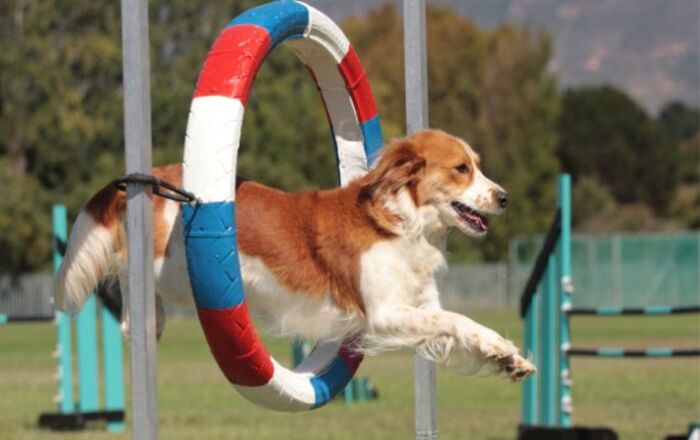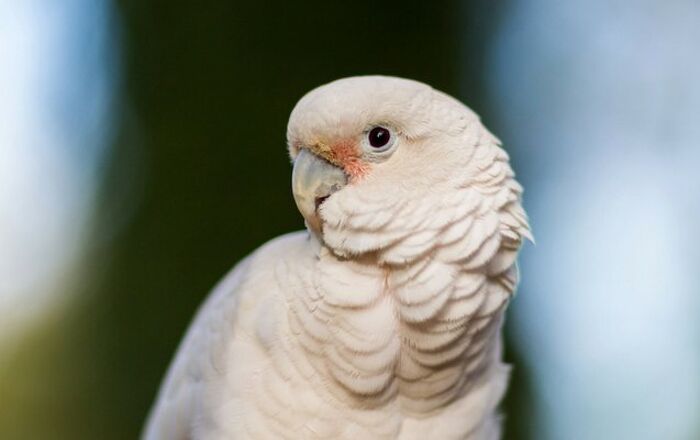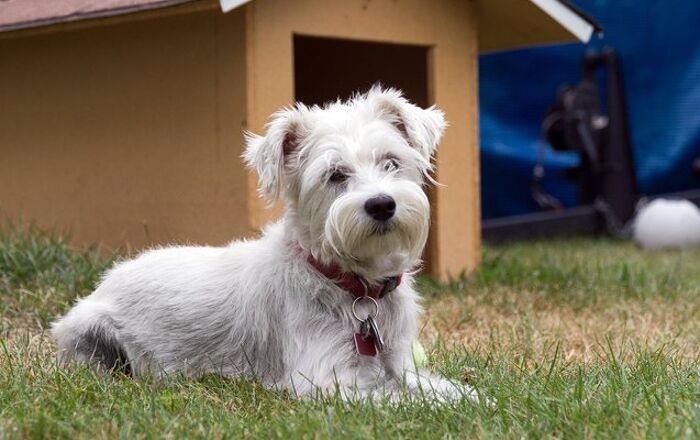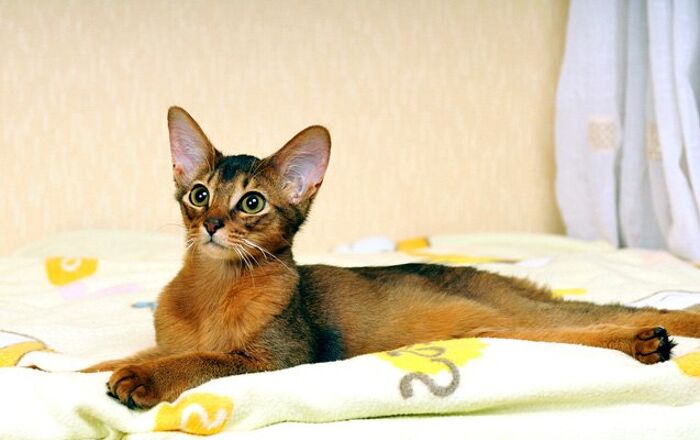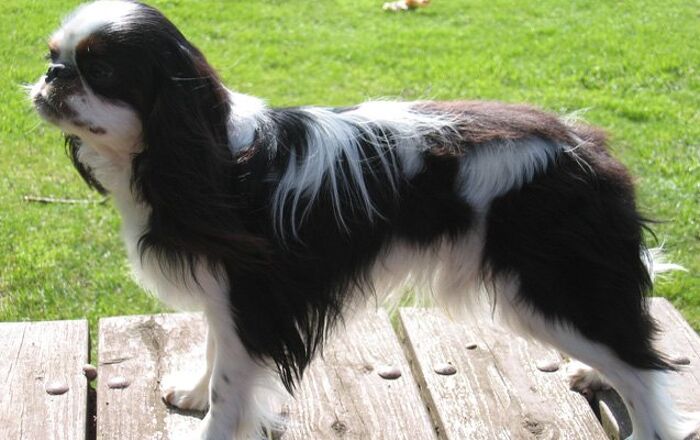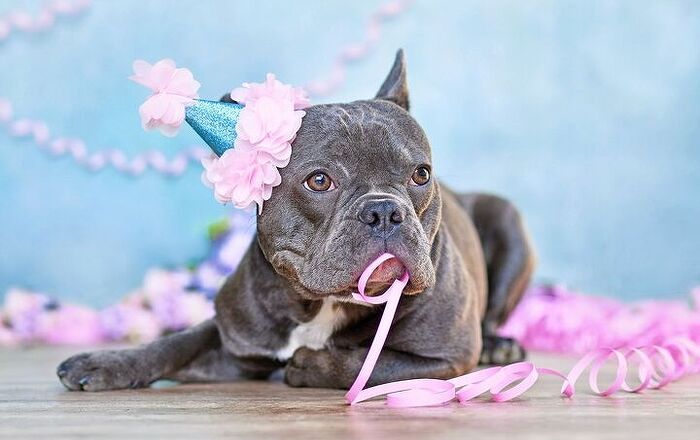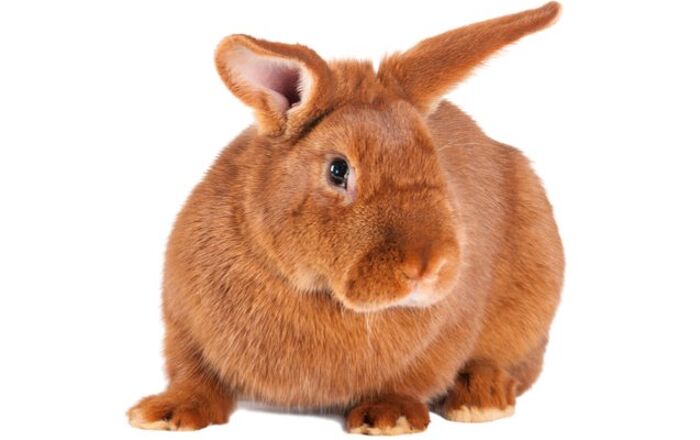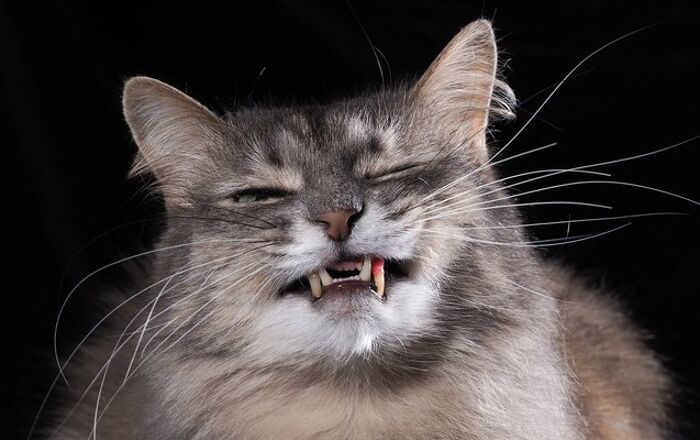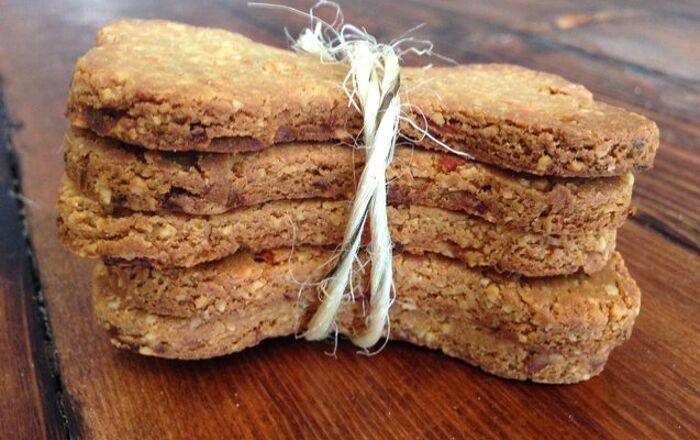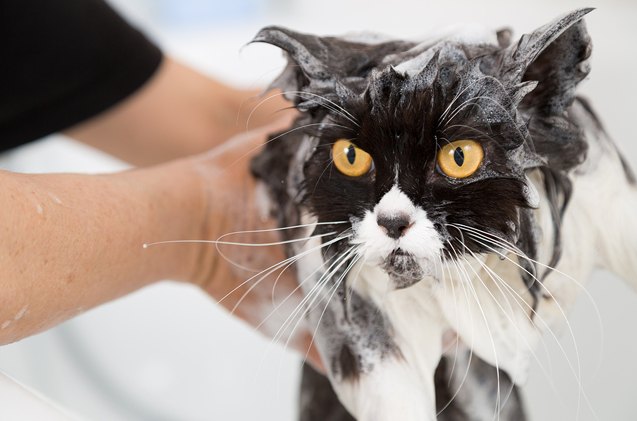
Even cats need a bath occasionally. But how do you keep your arms intact while undertaking this perilous activity? Here’s how to bathe a cat and remain relatively unscathed.
Cats are wonderful at keeping themselves clean, but sometimes they need a little extra help, such as when they have a flea infestation or they have gotten themselves really dirty.
But bathing cats can definitely be a challenge, what with their aversion to water and all. Here are nine tips on how to bathe a cat so you can make the experience less stressful for both you and your feline friend.
Choose the Ideal Time for a Bath
Choose a time to bathe your cat when she’ll be the most calm. Perhaps you want to play with her for a bit to tire her out before giving her a bath. This will make it easier for you to control her, as she’ll hopefully be more relaxed.
Related:Cat Grooming Basics You Need To Know
Trim Kitty’s Claws and Brush Her Fur
Your cat’s claws are powerful weapons that should be trimmed regularly. Don’t forget to give them a trim, if necessary, before giving her a bath in order to avoid scratches.
It’s also a good idea to brush your cat before the bath. This will work on removing loose hair, and you can work on removing mats at the same time. The ASPCA also recommends gently placing a bit of cotton in your cat’s ears in order to keep water out of them.
Related:Fun Facts About Cat Hairballs
Use a Rubber Bath Mat and Fill the Tub
A rubber bath mat placed inside the tub or sink where your cat will be bathed is a great way to keep her from slipping. After placing the mat down, fill up the tub or sink with about 3 to 4 inches of lukewarm water (depending on the height of your cat). The water shouldn’t be hot, as it will burn your kitty’s skin.
Wet Your Cat
Next up is the part your cat will probably hate the most: wetting your cat. To make it easy, you can utilize a handheld spray hose. Thoroughly wet your cat, but avoid spraying the water directly into her nose, eyes, and ears. In the event that you don’t have a spray hose, you can instead use a plastic cup or pitcher to gently pour water over your cat’s body.
Time to Lather Up
The next step involves gently massaging a mild cat-specific shampoo into her fur. Opt for a product that’s made of natural ingredients, if possible. The ASPCA recommends 1 part cat shampoo to 5 parts water. You should work your way from the cat’s head to her tail, moving in the direction of the growth of the hair. Again, avoid the ears, eyes, and face.
Rinse Thoroughly
After your cat has been lathered up, it’s time to rinse off the shampoo with lukewarm water, making sure that all of the soap is completely washed away because residues can actually attract more dirt and they can irritate your kitty’s skin.
Wash Your Cat’s Face
To wash your cat’s face, use a washcloth that is soaked with lukewarm water (no soap). Simply wipe kitty’s face carefully and gently. If her face is really dirty, though, use extra-diluted cat shampoo and be especially careful around the eyes and ears.
Dry Her Off
Once you’re all done thoroughly rinsing your kitty, it’s time to dry your pet with a large towel first. You can use your blow dryer if she’s okay with the noise, but keep it on the lowest heat setting. Keep her in a warm place that doesn’t have any cold drafts in order to allow her body to warm up and dry off. And use a wide-tooth comb to untangle the fur on longhaired kitties.
Give Rewards
Your cat has just been through quite a lot, so it’s important to give her plenty of praise and a delicious treat as a reward for being such a good kitty! And at the same time, why not treat yourself… after all, you just survived giving your cat a bath!
How do you bathe a cat? Are there any tips you’d like to share that you’ve seen work? Please leave your ideas in the comment section below.

